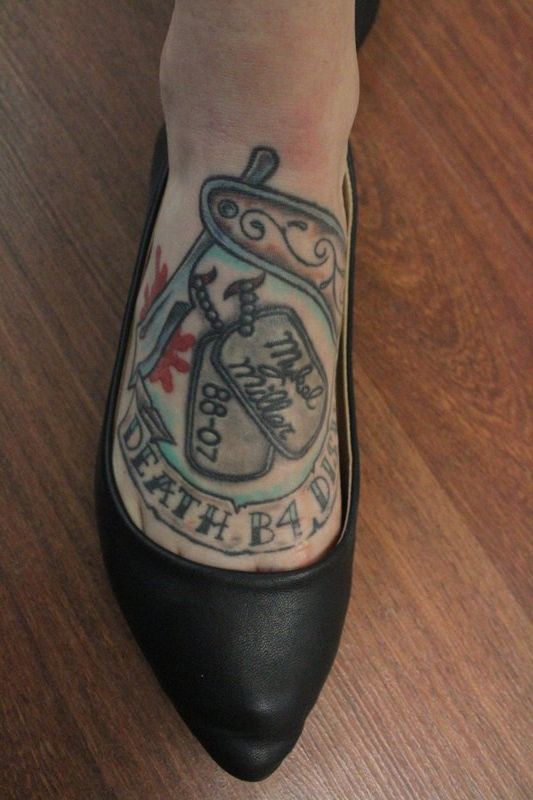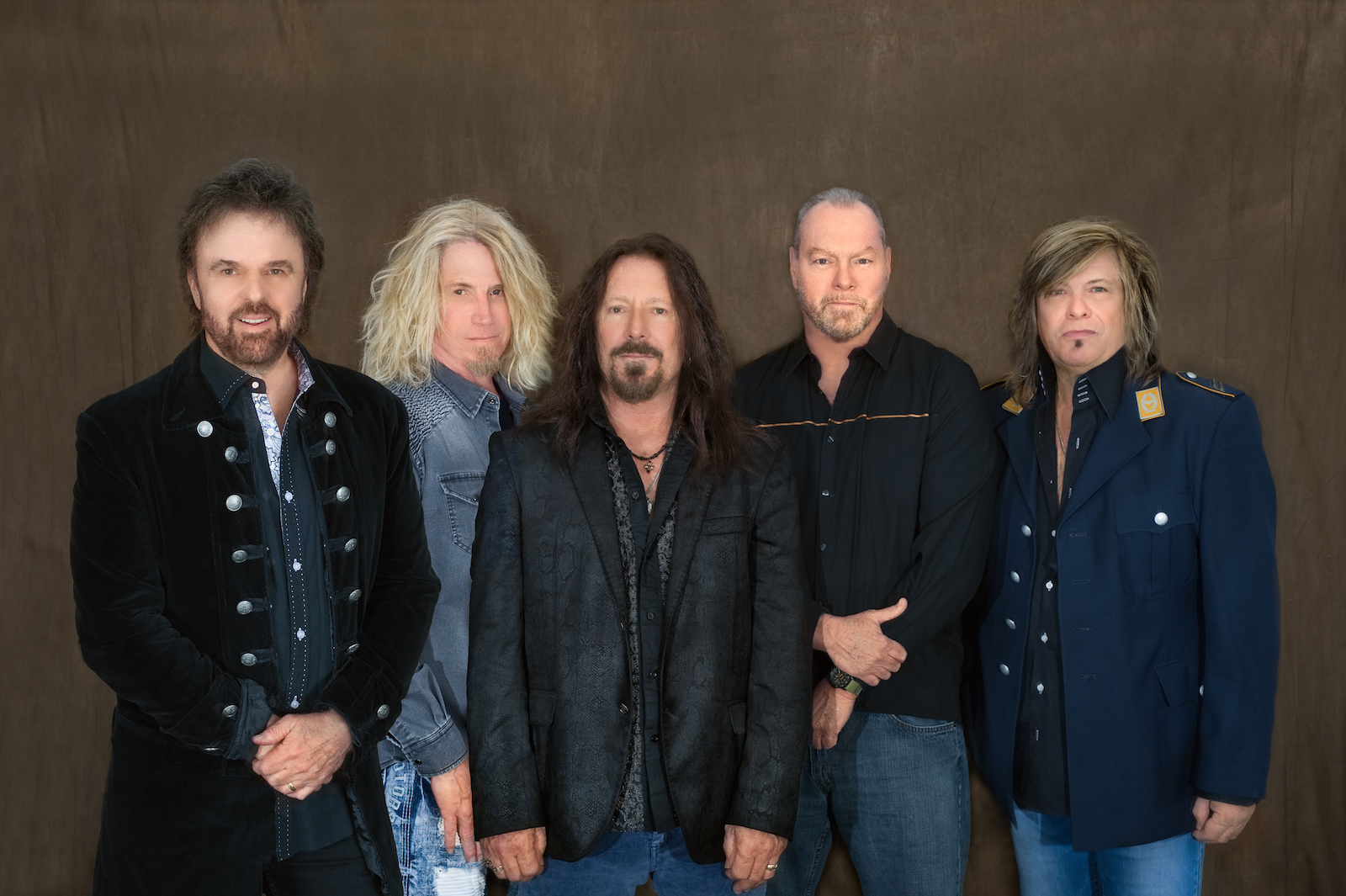Enemy: PTSD
Published 6:30 am Sunday, October 4, 2015

- Desiree Carver | The Valdosta Daily TimesSarah Smith got a tattoo in honor of a fallen comrade.
VALDOSTA — “I said a few words at his funeral. We didn’t get along too well and we were always trying to outdo each other,” said Jose Perez. “He died in a bomb explosion at a checkpoint. He has to know deep down that I respected him, but it still haunts me.”
Combat veteran Perez was speaking of an officer he had a friendly rivalry with while overseas.
“He was younger, smarter and better overall,” he said. “I knew deep down inside he was. I still think about him all the time.”
The constant thoughts became the precursor to his survivor’s guilt and PTSD, he said.
Post-Traumatic Stress Disorder can be caused by a number of factors including exposure to actual or threatened death, serious injury or sexual violence, according to the American Psychiatric Association’s Diagnostic and Statistical Manual of Mental Disorders.
People who have served or are currently serving in the military are often the most affected.
Dr. Joe Morgan, a psychiatrist at Valdosta Psychiatric Associates, explained PTSD can lead to permanent changes in a person including flashbacks, mood swings, depression, hallucinations and hyper-vigilance.
The symptoms are all too familiar to Perez.
He signed his life over to the Army four days after his high school graduation in 1991.
After a five-year commitment, he left to attend school at the University of West Florida.
Just after the Sept. 11 attacks, he returned to the military at a time when he knew he would be going to war. He was in Iraq in 2007. He searched for Osama bin Laden.
Perez served as civil affairs leader, meaning he and his comrades worked with local leaders in areas to help stabilize communities and help improve local government operations.
Although he said parts of his journey were great experiences and produced numerous friendships, he is still haunted by the never-ending warfare and losses he endured.
Perez said he had a constant feeling of nakedness without his weapon and felt out of place while transitioning back into civilian life.
His feelings led to a downward spiral of excessive drinking and run-ins with the law.
After his fourth altercation, Perez’s commander enrolled him into PTSD treatment, and he was diagnosed with both PTSD and depression.
“I stopped drinking but I stayed home and didn’t do anything. I was emotionally detached and wouldn’t leave my room. Even going to Walmart was difficult because being around crowds would trigger my anxiety. You don’t know when it’s going to happen or what could trigger it,” said Perez.
Perez recalled a specific experience at a naval museum when he was going to do a flight simulator with his nephew.
“My entire body went numb. I couldn’t move or speak. PTSD isn’t always flipping out and going crazy. Sometimes it’s anxiety and detachment from the world,” he said.
Everyday tasks, such as driving, became next to impossible for Perez. He faced a lot of misunderstanding from those around him. He said many people cannot fathom an ailment that cannot be seen.
He began medications to help tame his symptoms such as night sweats and panic, but admits getting help is sometimes the hardest part for a sufferer.
“Veterans are physically tough and mentally strong. Nothing stops a solider and a lot don’t want to go out and get help as they see it as a sign of weakness. However, it’s almost impossible to go on without treatment,” he said.
Although he may always battle the illness, he produced positivity from the darkness, he said.
In September 2014, Perez opened Fit Fighters Fitness, a gym designed specifically for PTSD sufferers, veterans or not. He created a small, safe environment that allows members to get to know each other and be fully comfortable.
He began working with Wounded Warriors, allowing him to find people who had gone through many of the same things he endured.
“They aren’t going to judge or be critical of me,” Perez said. “I am a big advocate of Wounded Warriors and now have them come to the gym.”
PTSD does not affect only one gender, especially in an age when women also go into combat.
Sarah Smith is one of the frequently forgotten veterans battling PTSD.
With both of her parents’ signatures, she signed up for the Air Force in January 2002 at the age of 17 and left for service in July. It was just one month after her graduation from Coffee County High School.
She attended tech school for vehicle operations and dispatch at Fort Leonard Wood in Missouri, then went to Seymour Johnson Air Force Base in Goldsboro, N.C.
A year in Afghanistan soon followed, with Smith forming a close-knit, family bond with her comrades.
“We were all protective of each other and stuff. It was just kind of normal,” Smith said.
Reading a book one evening at a small outpost where she expected to stay overnight, she recalled someone hooking up an iPod to some speakers. All of the guys began dancing and goofing around, enjoying the evening.
“Then we got hit,” she said.
A group of trucks, one driven by Smith, moved out. She remembered her major at the time not wanting to wait for a minesweeper.
Driving through the desolate area of Afghanistan in a forceful group, nightmare became reality.
She witnessed the unimaginable.
“They didn’t look under their truck. They were already sitting on top of an IED,” said Smith, referring to an improvised explosive device. “He just drove right over a pressure plate.”
The explosion was unavoidable.
“It made a huge blaze from the flammable diesel and rounds were going off. I watched as one of the men was pulled from the blaze by his vest and his right leg was hanging on by a thread. He was taken by medevac. He had his leg amputated above the knee,” she said.
Although that solider was saved, Smith and her team were unable to pull out another solider due to the dangerous environment.
“We had to wait three hours to pull him out,” said Smith. “There was so little of him left. He was put into my truck and all I could see was a dead body moving back and forth.”
Smith could not continue the drive and had another driver take over.
A second attack occurred on their way back, prolonging the trip. She did not make it back with the body until 7 a.m. the following day.
Her dear friend was taken from the truck and a ramp ceremony was held to place his body on a helicopter.
At the time of his death, he was 19 years old.
A memorial service was held later where soldiers went up, one by one, to salute his rifle, boots and dog tags. “We didn’t do many missions after that,” Smith said.
After leaving the military, Smith did not notice immediate signs of PTSD.
But later, while living in Alabama, she began realizing how strongly the events had impacted her.
“I remember there was construction work taking place across the road and I heard noises from it and immediately rolled off my bed to the floor,” she said.
In August 2008, she sought help for an inability to sleep.
“I was the first person at the VA Hospital and the lady asked me what I needed,” Smith said. “I told her I just needed to talk to someone and then I broke down and told her I just want to go to sleep. She made me an appointment with a psychiatrist and he diagnosed me with PTSD.”
For Smith, her troubles worsened through the years with a breaking point in 2012 when she felt her dogs were the only things motivating her to live.
“I can’t work. My anxiety is so bad that sometimes I get in my car and drive across town and park. Then I just sit there and my anxiety grows and grows and I go back home without getting out of the car,” she said.
She may still struggle at times, but Smith said she has since made great strides in life. She recently became engaged to Clint Bass and attended a PTSD retreat with him by her side.
Perez and Smith are not alone in their struggles.
Their stories are similar to countless stories around the world of those who have endured similar horrors.
“I don’t understand how people can say it doesn’t exist,” said Dr. Morgan. “Even a minor car accident can cause PTSD symptoms. Part of it is a normal defense in the brain that gets out of control. It doesn’t just come from combat. It can stem from anything outside the normal experience. The longer the exposure, the more difficult it is to treat.”
Desiree Carver is Lifestyles Editor at the Valdosta Daily Times. She can be reached at (229) 375-5777.





